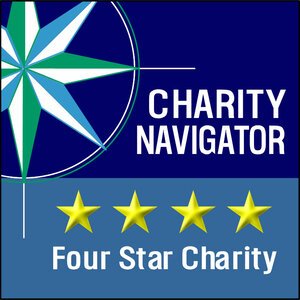By Katie Aiken
In October, two musical groups join us at the Western Folklife Center. Both are influenced by American roots music. Both bring an ingenuity and innovation that keeps their sound fresh. And both celebrate the creativity and tradition of making music with family and friends.
On Wednesday, October 26th at 7:00 pm, The Haunted Windchimes play at the G Three Bar Theater – just in time for Halloween. Learn more about them, their Pueblo, CO, beginnings, and their vintage-tinged folk and blues sound here.
This upcoming Saturday, October 22nd, Muddy Boots & the Porch Pounders play the Pioneer Saloon at 7:00 pm. Before they take the stage that evening, Matt Downs (of Muddy Boots) hosts his second annual build-your-own cigar-box guitar workshop at the Western Folklife Center. Matt was kind enough to answer a few questions about the peculiar instrument he has chosen and how (and why) he became obsessed with the cigar-box guitar (from here on out, referred to as the CBG). Be warned: the conversation below is paraphrased… Matt talks fast when talking about his love for the CBG!
Western Folklife Center (WFC): The cigar-box guitar seems like a fairly uncommon instrument, at least around here. How did you first get introduced to the CBG?
Matt Downs (MD): Well, probably the best way to tell it is… I wanted to play guitar as a kid. I took two years of guitar lessons in high school and I learned a lot about the guitar, but I still couldn’t play a lick of it after the two years. In 2009, I had just gotten the internet at home and learned about YouTube. I found a video of a guy playing a CBG and I said, “I think I can do that”…and the very next day, I went to a smoke shop and found a cigar box.
WFC: Did you teach yourself? How did you learn to play?
MD: I didn’t tell anybody that I’d made my first CBG. I made it around Christmas-time and I just wanted to be able to play ONE song at the family Christmas party. There was nobody on YouTube teaching how to play the 3-string CBG, so I had to figure it out for myself. Since I had a different approach than people who play “normally,” it was easier for me (than the guitar lessons had been). Something on the radio would catch my ear and I’d figure out how to play little bits of things until I could piece songs together.
WFC: When did you tell people you were playing the CBG? How did your family react?
MD: I gave away the first CBG I built that Christmas as a white elephant present at a gift exchange. It was kind of a big joke. My life is kind of a series of big jokes, ha. So, my family was expecting something weird. The CBG was a novelty at first. But, I really enjoyed it. The CBG really lends itself to the blues (with its three strings and slide playing). When I first started, I’d tell people, “this is a blues guitar, but I do not have a blue bone in my body.” But, I loved it so much that I started learning, studying blues music, tracing influences back to where the blues started. That’s how I started to understand it and be able to play it. My family probably thinks I’m completely insane, but I’m just having fun!
WFC: What about your band members? How did they react? How did you find people to play with?
MD: Right after I learned how to build a CBG, I decided to do an open mic at a music festival in Ogden to play in front of people. It was a bluegrass festival and I did a terrible job. I had never played standing up before. I had never sung into a microphone! But, everybody was gracious and told me to play something else. I only knew two songs at the time. The whole experience was so encouraging, though, it lit a fire underneath me.
WFC: What possessed you to get up on a stage at that point?
MD: Ha! I’ve always been kind of a show-off. From riding motorcycles to yo-yo. (yep, that’s right, yo-yo). And, when I find something I enjoy, I dig in and become a bit obsessive. In fact, I was the yo-yo state champion in Utah when I was younger. I don’t usually put that on my resume. It doesn’t come up in conversation much. (Sorry, Matt, the secret’s out.)
Actually, the jam sessions at the [WFC’s National] Cowboy Poetry Gathering were a major inspiration for me to be able to play with other people. I wanted to do that—to be able to jump in, on the fly, with other musicians and be able not just to follow along, but to actually add something.
I knew that I needed to learn to play with others before I could improve. When I moved to Elko, I put an ad on Craig’s List. Once I told people that I play the CBG, most of them stopped responding. (Luckily, he kept it up and found some like-minded musicians who were open to playing what some might call “weird stuff” —one of his current bandmates had even responded to that original Craig’s List ad though they actually met a few years later.)
WFC: How do you describe the style of music that Muddy Boots plays?
MD: That’s always a sticky situation… I’ve sort of coined the term trans-genre music. It’s a little bit of this and little bit of that… roots rock might be the best description. We’re heavily influenced by the blues, folk rock, and roots rock.
WFC: What do you want people to know about the CBG?
MD: It’s really amazing to play an instrument that you made yourself. I used to think instruments were almost magical. Building your own instrument takes a lot of the mystery out of music. I’ve built instruments out of all kinds of things—garbage cans, mailboxes, motorcycle parts. It makes you realize music does not have to be commercialized; music used to be made on your front porch at night, it was homegrown, something you could listen to in your back yard, at home. This is a way of taking music back (out of a commercialized and monetized realm) —you can make whatever style of music you want on any instrument you can make.
The 2015 Guitar-Box Guitar class at the Western Folklife Center
Join us on Saturday, October 22 – meet the guys who joined a band led by a cigar-box guitar-playing yo-yo champion. And, maybe you’ll be inspired to demystify the music-making process yourself and strike a tune on the next cigar-box… or coffee can… or haircomb… or spare car part… you stumble across.








